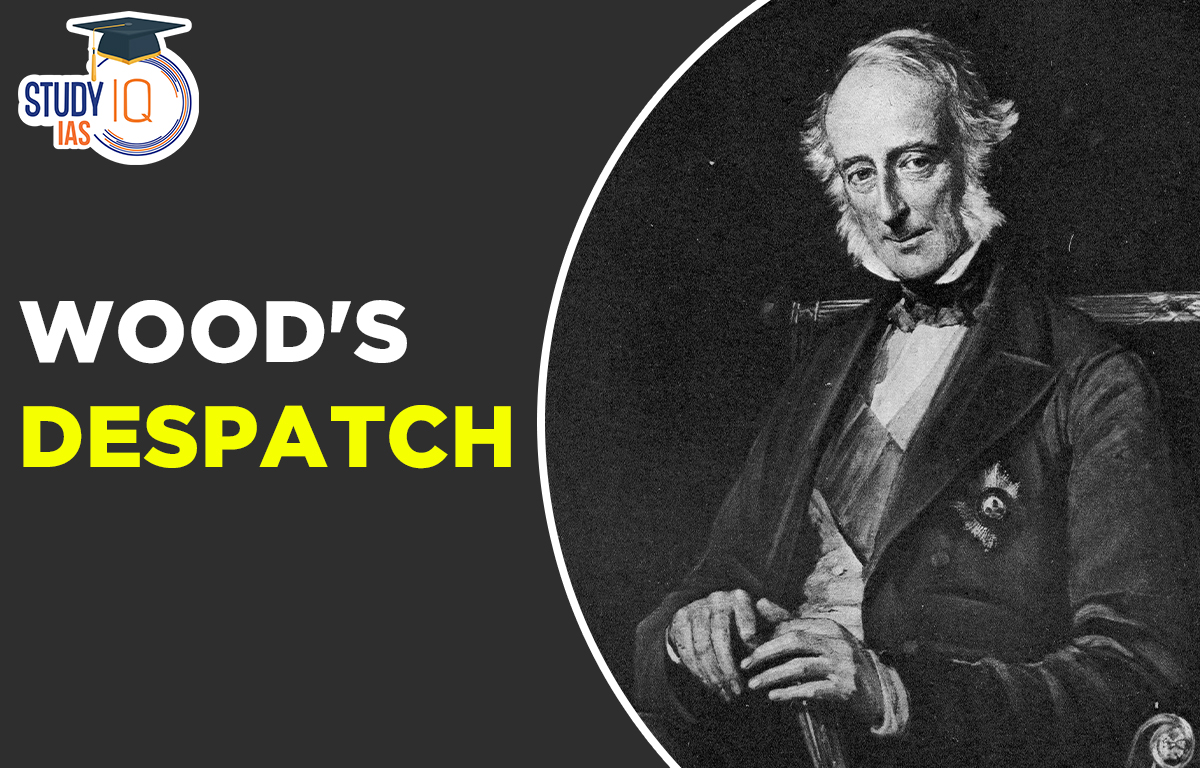Table of Contents
Wood’s Despatch
In 1854, Charles Wood wrote a letter outlining a possible educational system for India. The first thorough plan for the expansion of education in India was contained in this document, which is often referred to as the “Magna Carta of English Education in India.” British lawmaker and supporter of the Liberal Party was Charles Wood.
From 1846 to 1852, he was Chancellor of the Exchequer. Later, he was selected to serve as the East India Company’s Board of Control’s chairman. He handed the “Wood’s despatch” to the governor-general, Lord Dalhousie, in 1854. This article will examine the Woods Despatch, which is helpful for preparing for the UPSC exam.
Read about: Warren Hastings
Wood’s Despatch Introduction
Charles Wood served as the president of the English East India Company’s Board of Control, which was established by Pitt’s India Act of 1784. He had also served as India’s state secretary. He made a big contribution to India’s education reform.
He dispatched a letter to Lord Dalhousie, who was the Governor-General of India at the time, in 1854. Wood’s Despatch advocated for the adoption of vernacular languages in primary schools. He also advocated for the use of the anglo-vernacular in high schools and the use of English as the primary language of instruction in colleges through the dispatch. The Wood’s Despatch is regarded as the “Magna-Carta” of English education in India as a result.
Wood’s Despatch 1854 Features
The Board of Control’s President, Sir Charles Wood, had a significant role in India’s adoption of English language instruction and female education. In 1854, he wrote to Lord Dalhousie, who was the Governor-General of India at the time. Woods advocated for the use of vernacular languages in elementary schools, Anglo-vernacular languages in high schools, and English for college students.
The Despatch outlines the goals and objectives of the Company’s educational program in India in the first place. It put the responsibility for Indian education ahead of all other commercial obligations.
Wood’s Despatch 1854 Objective
The goal was to teach Indians about Western culture and culture in the West. Another goal was to educate native Indians so as to produce a class of public servants. to promote the moral development of the next generation while simultaneously fostering intellectual growth. Additionally, the goal was to develop a healthy market for the consumption of those commodities while simultaneously enhancing Indians’ practical and vocational abilities so that an increasing number of items could be created.
Wood’s Despatch Recommendations
For the first time, Wood’s Despatch suggested that each of Bengal’s five provinces—Bombay, Madras, Punjab, and the North-Western provinces—create a Department of Public Instruction. Another important recommendation made by the Despatch was to increase access to public education.
Many efforts were made to increase the number of elementary, middle, and high schools once it was recognised that the common people lacked educational possibilities. The Despatch advocated for the creation of universities in the three Presidency towns of Calcutta, Bombay, and Madras. The University of London was to serve as the inspiration for the universities. The universities planned to develop departments of law, civil engineering, and Arabic, Sanskrit, and Persian.
Indian education needed a grant-in-aid structure, according to Wood’s Despatch. The Wood’s Despatch underlined the value of educating Indian languages with the value of teaching English. The Despatch advocated for continued government support of women’s education.
The Wood’s Despatch suggested opening teacher training programs in every province. Teachers in special schools should have training in engineering, medicine, and law. The Wood’s Despatch promoted the creation of a network of graded schools across the country.
Wood’s Despatch Impact
The universities at Bombay, Madras, and Calcutta were founded in 1857. In every province, education departments were established. J.E.D. Bethune started Bethune School to provide education for women. Both an engineering institute in Roorkee and an agricultural institute in Pusa, Bihar, were founded. With European headmasters and principals in schools and colleges, British India’s educational system quickly underwent a Westernization process. Private Indian educators existed.
Wood’s Despatch UPSC
Modern education in India was brought to a whole new level by Wood’s Despatch. This despatch, which was addressed to the then-Governor-General Lord Dalhousie, provided recommendations for the British government on how to treat education in British India seriously and for the Indians’ benefit. For UPSC Preparation, read the entire article about Wood’s Despatch.


 Self-Respect Movement, History, Objectiv...
Self-Respect Movement, History, Objectiv...
 Role of Teachers in Educations, Student ...
Role of Teachers in Educations, Student ...
 Partition Horrors Remembrance Day, Histo...
Partition Horrors Remembrance Day, Histo...






















